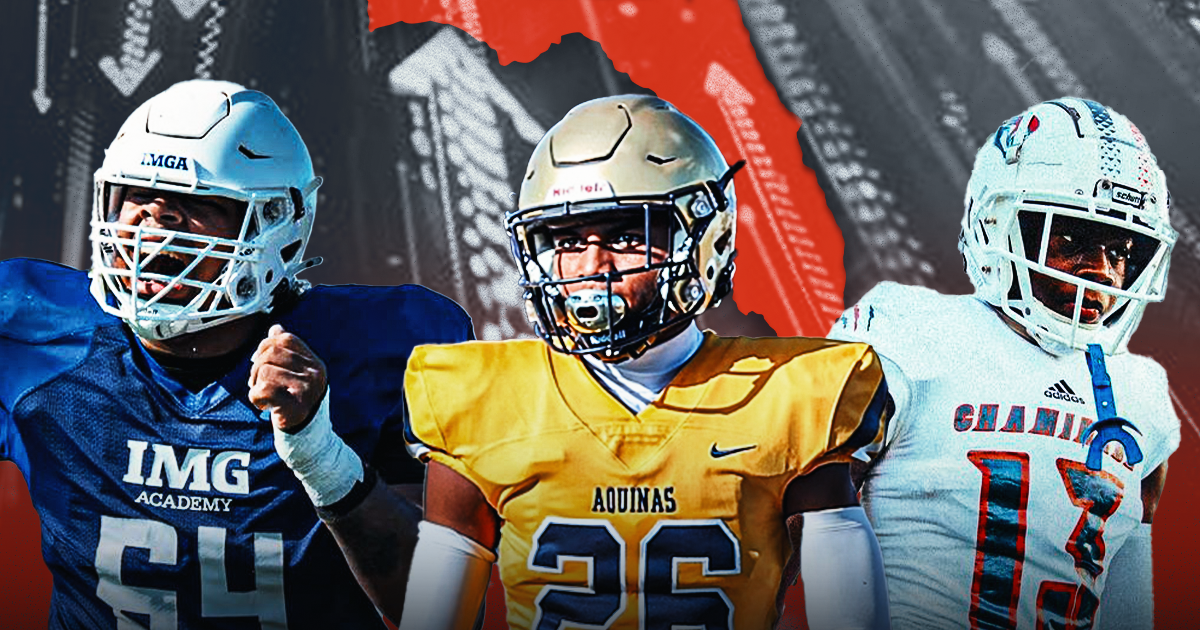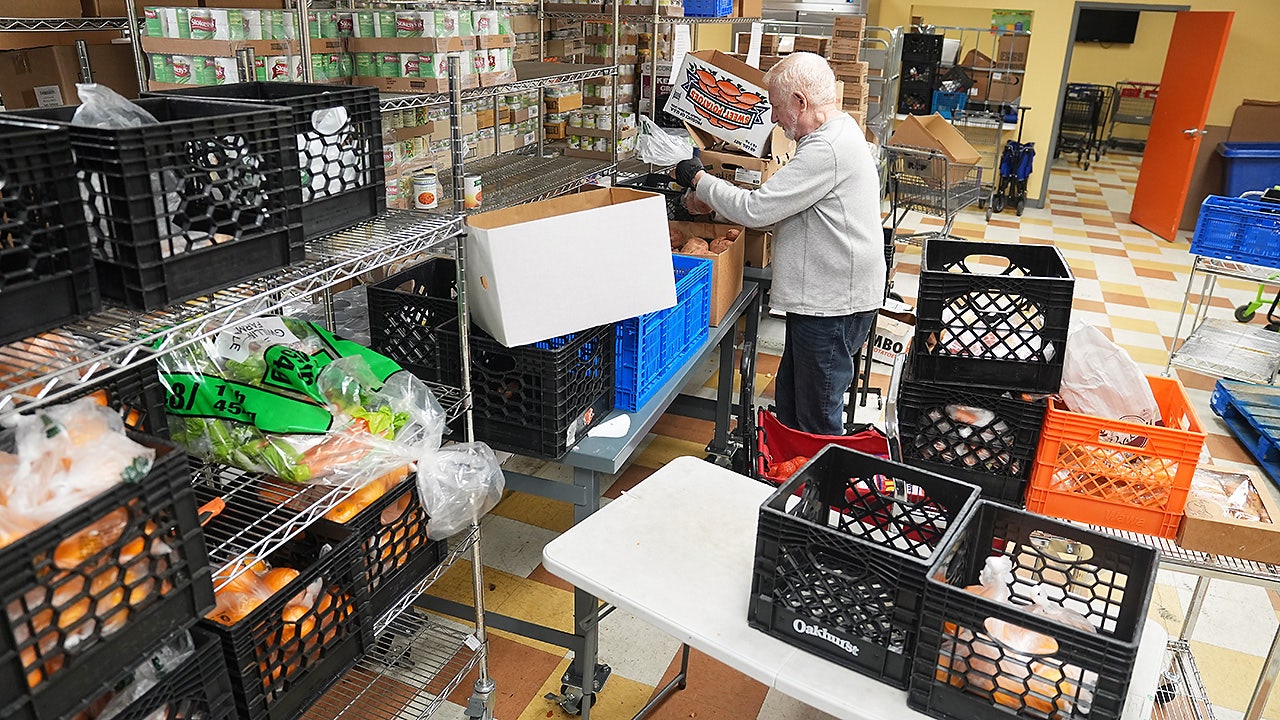Business
Trump Offers a Private Dinner to Top 220 Investors in His Memecoin

The flashy online announcement called it “the most EXCLUSIVE INVITATION in the World,” a chance to have “an intimate private dinner” with President Trump at his members-only golf club in Virginia, followed by a tour of the White House.
A seat would be reserved for each of the top 220 investors in $TRUMP, a cryptocurrency that Mr. Trump launched on the eve of his inauguration.
In an astonishing escalation of the Trump family’s efforts to profit from crypto, a website promoting $TRUMP, the president’s so-called memecoin, announced on Wednesday that the coin’s largest buyers would be invited to meet him. The effort was, in effect, an offer of access to the White House in exchange for an investment in one of Mr. Trump’s crypto ventures.
“Have Dinner with President Trump and the $TRUMP Community!” the invitation said. “Let the President know how many $TRUMP coins YOU own!”
For months, Mr. Trump’s forays into crypto have created ethical conflicts with little precedent in presidential history. As he markets digital currencies to the public, Mr. Trump has also appointed regulators who are scaling back crypto enforcement and called for legislation that would boost the industry’s prospects in the United States.
As news of the dinner invitation spread on social media, the memecoin’s price surged more than 60 percent, suggesting that investors were rushing to accumulate enough coins to qualify for a dinner seat.
“This is really incredible,” said Corey Frayer, who oversaw crypto policy for the Securities and Exchange Commission during the Biden administration. “They are making the pay-to-play deal explicit.”
A business entity linked to Mr. Trump owns a large tranche of the coins, meaning the president personally profits every time the price increases, at least on paper. Mr. Trump and his business partners also collect fees when the coins are traded, a windfall that amounted to nearly $100 million in the weeks after the coin debuted in January.
Victoria Haneman, a law professor at Creighton University, said the offering raised concerns about the ways Mr. Trump and his businesses “may maneuver to profit off the presidency.”
Early this year, the S.E.C. issued official guidance saying memecoins, a type of cryptocurrency based on an online joke or celebrity mascot, will not be subject to oversight by the agency. Crypto skeptics criticized the policy as a risky move that could open the door to rampant fraud by memecoin promoters.
As president, Mr. Trump has broad immunity from laws governing conflicts of interest, a loophole he has pointed out in the past. Representatives for the White House did not immediately respond to requests for comment. Mr. Trump’s son Eric, who helps run the Trump Organization, a sponsor of the $TRUMP coin, declined to comment.
Once a cryptocurrency skeptic, Mr. Trump embraced digital currencies on the campaign trail last year, as crypto companies poured tens of millions of dollars into the 2024 election.
In the fall, Mr. Trump and his sons, Donald Jr., Eric and Barron, said they were starting a company, World Liberty Financial, that offered a digital currency called WLFI. So far, $550 million of those coins have been sold, according to the company.
Not long after, Mr. Trump’s social media firm, Trump Media & Technology Group, moved to offer crypto-related financial products to amateur investors and announced a partnership with Crypto.com, a digital trading platform.
But Mr. Trump’s memecoin venture has generated the most attention.
Just three days before the inauguration, Mr. Trump posted on Truth Social, his social media site, that he was selling the coin. Sales of $TRUMP immediately spiked, making the president-elect a crypto billionaire on paper.
Memecoins tend to rise and fall quickly, and $TRUMP’s price soon cratered. Traders who had accumulated the coin suffered more than $2 billion in cumulative losses.
The dinner announcement appeared calculated to ignite more interest in the coins.
When $TRUMP went on sale in January, a large stash of the coins were allocated to the project’s backers. But rules built into the offering prevented those insiders from selling any of the coins until last week, raising fears that they would try to offload their holdings and cause $TRUMP’s price to drop further.
Instead, the price gradually climbed in the days before the invitation was released and then surged as the announcement went live.
On the memecoin’s website, the $TRUMP promoters set up a leaderboard of the coin’s biggest investors — essentially an online game allowing buyers to track their place in the rankings. Dinner invitations would go to the “top 220 average $TRUMP owners” between April 23 and May 12, the website said. The top 25 buyers would win access to a reception with Mr. Trump before the dinner and a V.I.P. tour of the White House. (At the moment, the 25th-ranked investor on the chart owns about 4,000 coins, worth roughly $54,000.)
“The more $TRUMP you hold — and the longer you hold it — the higher Your Ranking will be,” the website said.
The dinner with Mr. Trump is scheduled to take place on May 22 at the Trump National Golf Club, the website said, calling it the “Most Exclusive Once in Lifetime Invitation.”

Business
See Where Flights Have Been Canceled as Government Shutdown Drags On

Circles are sized by the number of canceled flights. Lines are the routes of flights that were canceled.
Flight cancellations on Friday
Hundreds of flights across the United States were canceled starting on Friday, with deeper cuts looming in the coming days.
Federal Aviation Administration and Transportation Department officials have said the traffic reduction is necessary to ease pressure on air traffic controllers, some of whom have been calling in sick and working second jobs because they have not been paid during the longest government shutdown in U.S. history.
The officials identified 40 airports where flights should be cut in phases, with the goal of reducing activity by 10 percent by the end of next week.
The disruptions have rippled to other airports but, at least so far, they have appeared to be relatively limited. Airlines focused the first wave of cancellations on shorter, regional flights, and major airports were working largely as normal on Friday. But widespread concern that the situation could worsen brought home the effects of the government shutdown to many more Americans.
The reduction in traffic comes weeks before the busy holiday travel season begins in the United States. The airports that have already been affected range from large hubs to smaller destinations. They are in blue states and red states, spread across the country.
Here is a look at how cuts at affected airports compare to cancellations at those hubs this time last year:
Washington Reagan
17.4%
151 of 869 flights
0.2%
Louisville
8%
12 of 150 0.1%
Cincinnati 7.2%
18 of 250
0.2%
Houston Hobby
6%
20 of 336
0.4% Indianapolis
5.7%
17 of 297
0.2%
Oakland
5.4%
11 of 203
0.4%
Boston
4.8%
46 of 960 0.1%
Newark 4.5%
42 of 940
0.4%
New York JFK
4.5%
41 of 913
0% New York LaGuardia
4.5%
47 of 1,045
0.1%
Minneapolis/St. Paul
4.5%
35 of 784
0.1%
Detroit
4.3%
35 of 806 0.1%
Philadelphia 4.3%
30 of 701
0.1%
San Francisco
4.3%
41 of 960
1.2% Atlanta
4.2%
84 of 1,979
0.1%
Los Angeles
3.9%
50 of 1,274
0.3%
Denver
3.6%
67 of 1,866 1.4%
Ontario 3.6%
6 of 168
0.7%
Phoenix
3.6%
44 of 1,206
0.3% Chicago O’Hare
3.5%
82 of 2,313
0.3%
San Diego
3.5%
22 of 627
0.4%
Dallas-Fort Worth
3.4%
62 of 1,810 1.7%
Tampa 3.4%
17 of 493
0.2%
Baltimore-Washington
3.2%
18 of 562
0.2% Washington Dulles
3.2%
20 of 619
0.2%
Salt Lake City
3.2%
21 of 650
0.2%
Charlotte
3.1%
41 of 1,327 0.1%
George Bush Houston 3.1%
35 of 1,112
0.2%
Memphis
3.1%
5 of 160
0.2% Fort Lauderdale
2.8%
16 of 564
0.1%
Dallas Love Field
2.7%
11 of 402
0.9%
Orlando
2.7%
27 of 1,001 0.2%
Miami 2.7%
23 of 839
0.1%
Honolulu
2.5%
10 of 400
0.3% Las Vegas Reid
2.5%
29 of 1,138
0.3%
Chicago Midway
2.5%
10 of 405
0.3%
Portland (Ore.)
2.3%
10 of 438 0.5%
Seattle-Tacoma 2.3%
24 of 1,033
0.5%
Anchorage
1%
2 of 201
1.3% Teterboro
0%
0 of 8
No data
Share of scheduled flights that were canceled on Friday and throughout Nov. 2024
Business
Harvested lungs. Factory parts. How flight cutbacks could slow delivery of vital goods to LAX and other airports

A lung just harvested for an organ transplant. A part critically needed to restart an assembly line. The hottest toy for Christmas.
Those are among the kinds of goods shipped by the country’s complex air cargo system that could be significantly delayed following the Federal Aviation Administration’s decision to reduce flight capacity at 40 major airports, including LAX, according to logistic experts.
The 10% reduction in flight capacity announced Thursday that included Los Angeles International Airport and other hubs because of air traffic controller shortages stemming from the government shutdown already resulted in more than 3,500 flights delays on U.S. soil and more 950 cancellations by Friday afternoon, according to FlightAware.com.
Secretary of Transportation Sean Duffy warned Friday that 20% flight cuts could be in order if the shutdown continues.
“We are at a pivot point where certain things will be delayed and certain things will not,” said Vincent Iacopella, an executive at Alba Wheels Up, a logistics company that services LAX. “A higher percentage would be detrimental, but it’s also a matter of the length of the disruption.”
The air cargo system generally carries time-sensitive and high-value cargo such as pharmaceuticals, medical devices and tech components whose speed of delivery takes precedence over cost.
It’s also peak season for retailers trying to get their hands on holiday goods that are fast moving or weren’t ready for ocean freight months ago.
“Getting that item to market that influencers have suddenly determined is this year’s must-have Christmas gift will be more challenging now,” trade economist Jock O’Connell said.
The system includes not only major carriers such UPS, DHL and FedEx but also smaller competitors and dedicated freighters operated by commercial airlines. Also playing a key role in same-day delivery is the cargo hold of passenger flights operated by commercial airlines.
“Shippers are using airlines, because airlines have flights in the air all day long. It’s treated as baggage,” said Brandon Fried, executive director of the Airforwarders Assn. “That’s the highest priority.”
Among the goods that Fried said are shipped in cargo holds are harvested lungs that need to be delivered to an operating table, temperature-sensitive and radiological pharmaceuticals and parts needed for assembly lines. Any cancellation or flight delay immediately would impact such deliveries.
“It’s just at the beginning. If this lasts for a few days, you’re going to see significant impact throughout the air cargo supply chain,” he said.
Less affected, he said, would be air cargo companies such as UPS that have their own fleet of planes and can fly at night outside the FAA flight restrictions that run from 6 a.m. to 10 p.m.
In a statement, Fed Ex said it had contingency plans in place to move “time-sensitive” and “critical shipments” such as lifesaving pharmaceuticals and medical devices.
LAX is one of the five largest cargo airports in the country and a major destination for cargo arriving from China, Taiwan and other Pacific Rim countries.
David Gibson, president of the Los Angeles Air Cargo Assn., said so far the FAA order has not disrupted international flights arriving in the U.S. as airlines adjust their operations domestically.
Many flight cancellations could be handled by long haul trucks, he said, but that could change if the FAA further restricts flights, he said.
“If it goes beyond this, then it can get really ugly, but I don’t think it will,” he said. “Maybe I’m just being hopeful.”
Business
L.A.-area fire victims demand resignation of state’s top insurance regulator

Victims of the January wildfires in Los Angeles County urged Gov. Gavin Newsom on Thursday to call for the resignation of California Insurance Commissioner Ricardo Lara, saying the regulator has allowed insurers to run roughshod over them.
Lara, an independently elected state official, was accused at an Altadena news conference of being too closely aligned with the interests of insurers who homeowners say have delayed, denied and lowballed claims, forcing victims to tap retirement accounts and max out credit cards as they fight for their benefits.
“Gov. Newsom, we need your help. Your Palisades constituents have your back. Now is the time for you to have ours,” said Jill Spivack, 59, a Pacific Palisades resident whose home of 25 years burned down but who has yet to start rebuilding.
“You made promises when the cameras were rolling,” Spivack added. “Now we need to see your actions behind those words. Commissioner Lara has proven he won’t protect consumers. Please replace him with someone who will.”
The event, attended by several dozen Altadena and Pacific Palisades fire victims, was held by the Eaton Fire Survivors Network and attended by other groups, including the Los Angeles insurance advocacy group Consumer Watchdog, which called on Lara to resign last year.
Joy Chen, executive director of the network, cited recent surveys that found 70% of insured survivors have encountered delays and denials, while 8 in 10 Eaton and Palisades fire survivors are still displaced. The fires damaged or destroyed nearly 13,000 homes.
“We have an unprecedented housing crisis on our hands, which grew out of the insurance crisis on our hands,” Chen said. “That is why it is so urgent that Gov. Newsom act now.”
Newsom’s press office did not immediately respond to a request for comment. A spokesperson for Lara —whose term expires in 2026 — rejected any suggestion he would resign.
“The facts are Commissioner Lara has moved quickly and decisively to respond to the fires, including using every tool available to ensure wildfire survivors receive all the benefits they are entitled to under current law,” said Michael Soller, the department’s deputy commissioner of communications.
On Saturday, Lara had posted on X, “I’m here to finish the job — and leave the next Commissioner in a stronger position than I inherited.”
To advance its goals, the Eaton network established a website — lararesign.org — where fire victims and others can send emails to the governor and Lara asking for the commissioner’s resignation and leaving comments.
Much of the anger from fire victims has been directed at State Farm General, California’s largest home insurer, which dropped tens of thousands of policyholders in recent years and has been the target of complaints about its claims handling.
Spivack, who said her home on Aderno Way has been insured by State Farm for decades, said that it has been a full-time job getting her personal property claims paid amid changing adjusters and other issues.
Meanwhile, she has been haggling with the insurer for months after getting an estimate of only $250 a square foot to rebuild her home, less than a third of the going rate.
“At first we thought, thank goodness we have insurance. We’ve been loyal State Farm customers for 25 years,” Spivack said. “We trusted their promise to help us rebuild like a good neighbor. But what we faced instead is confusion, lowball estimates and a delay at every turn.”
Altadena resident Branislav Kecman, 64, who lost his Crescent Drive home of 12 years in the fire, said he was dropped by State Farm in July 2024 and forced onto the FAIR Plan where his coverage dropped from $1.5 million to $1 million but got more expensive.
“We really feel betrayed by our system, especially our commissioner that’s supposed to fight for our interest instead of, so to speak, being in bed with the insurance companies,” he said.
Bob Devereux, a State Farm spokesperson, said the insurer has handled more than 13,500 claims and paid almost $5 billion to January wildfire victims, with nearly 200 claim adjusters still on the ground.
“State Farm is committed to paying customers what they’re owed. We’re here every step of the way and working with elected officials to build a more sustainable insurance market in California,” he said.
Chen and Carmen Balber, executive director of Consumer Watchdog, also accused Lara of exacerbating the state’s insurance crisis through loopholes in his Sustainable Insurance Strategy, which was backed by the governor.
The regulatory changes gave insurers concessions, including the right to charge homeowners for reinsurance, in exchange for a pledge to write more policies in fire-prone neighborhoods.
However, since the deal was announced in 2023 insurers have dropped hundreds of thousands of homeowners onto the FAIR Plan’s rolls, as The Times has reported.
Soller said the department is currently reviewing rate filings submitted by five insurers that will commit the companies “to stay and grow” in the state, and it expects more to enter the market.
Chen advocated for a new insurance commissioner to adopt a five-point plan developed by the Eaton group to improve the insurance market and oversight of insurers.
That plan includes finishing an investigation into State Farm’s claims practices started this year by the department within 60 days — and freezing any rate hikes for the insurer until the claims issues are resolved. (Lara’s stance has been that the two issues are legally separate matters.)
Other elements of the plan include ending denials by the FAIR Plan of smoke damage claims — another issue the department is investigating — and preventing “illegal cuts’’ in temporary housing benefits while survivors rebuild.
Soller said the department is already working on the various matters raised.
-

 Culture1 week ago
Culture1 week agoVideo: Dissecting Three Stephen King Adaptations
-

 Austin, TX2 days ago
Austin, TX2 days agoHalf-naked woman was allegedly tortured and chained in Texas backyard for months by five ‘friends’ who didn’t ‘like her anymore’
-

 Education1 week ago
Education1 week agoOpinion | New York City Mayoral Candidates: Who Would Be Best?
-

 Seattle, WA6 days ago
Seattle, WA6 days agoESPN scoop adds another intriguing name to Seahawks chatter before NFL trade deadline
-

 San Diego, CA1 week ago
San Diego, CA1 week agoAdd Nick Hundley, Ruben Niebla to list of Padres’ managerial finalists
-

 Business1 week ago
Business1 week agoCommentary: Meme stocks are still with us, offering new temptations for novice and unwary investors
-
Business1 week ago
Disneyland Resort lays off 100 people in Anaheim
-

 Politics1 week ago
Politics1 week agoVirginia school district slapped with complaint alleging new claims in viral trans locker room fight


















